C K Basu
The running kinematics of free-roaming giraffes, measured using a low cost unmanned aerial vehicle (UAV)
Basu, C K; Deacon, F; Hutchinson, J R; Wilson, A M
Authors
F Deacon
J R Hutchinson
A M Wilson
Abstract
The study of animal locomotion can be logistically challenging, especially in the case of large or unhandleable animals in uncontrolled environments. Here we demonstrate the utility of a low cost unmanned aerial vehicle (UAV) in measuring two-dimensional running kinematics from free-roaming giraffes (Giraffa camelopardalis giraffa) in the Free State Province, South Africa. We collected 120 Hz video of running giraffes, and calibrated each video frame using metatarsal length as a constant object of scale. We tested a number of methods to measure metatarsal length. The method with the least variation used close range photography and a trigonometric equation to spatially calibrate the still image, and derive metatarsal length. In the absence of this option, a spatially calibrated surface model of the study terrain was used to estimate topographical dimensions in video footage of interest. Data for the terrain models were collected using the same equipment, during the same study period. We subsequently validated the accuracy of the UAV method by comparing similar speed measurements of a human subject running on a treadmill, with treadmill speed. At 8 m focal distance we observed an error of 8% between the two measures of speed. This error was greater at a shorter focal distance, and when the subject was not in the central field of view. We recommend that future users maximise the camera focal distance, and keep the subject in the central field of view. The studied giraffes used a grounded rotary gallop with a speed range of 3.4–6.9 ms−1 (never cantering, trotting or pacing), and lower duty factors when compared with other cursorial quadrupeds. As this pattern might result in adverse increases in peak vertical limb forces with speed, it was notable to find that contralateral limbs became more in-phase with speed. Considering the latter pattern and the modest maximal speed of giraffes, we speculate that tissue safety factors are maintained within tolerable bounds this way. Furthermore, the angular kinematics of the neck were frequently isolated from the pitching of the body during running; this may be a result of the large mass of the head and neck. Further field experiments and biomechanical models are needed to robustly test these speculations.
Citation
Basu, C. K., Deacon, F., Hutchinson, J. R., & Wilson, A. M. (2019). The running kinematics of free-roaming giraffes, measured using a low cost unmanned aerial vehicle (UAV). PeerJ, 7, e6312. https://doi.org/10.7717/peerj.6312
| Journal Article Type | Article |
|---|---|
| Acceptance Date | Dec 19, 2018 |
| Publication Date | Feb 12, 2019 |
| Deposit Date | Feb 26, 2019 |
| Publicly Available Date | Feb 26, 2019 |
| Journal | PeerJ |
| Electronic ISSN | 2167-8359 |
| Publisher | PeerJ |
| Peer Reviewed | Peer Reviewed |
| Volume | 7 |
| Pages | e6312 |
| DOI | https://doi.org/10.7717/peerj.6312 |
| Public URL | https://rvc-repository.worktribe.com/output/1383521 |
Files
11953.pdf
(6.8 Mb)
PDF
You might also like
Artificial mass loading disrupts stable social order in pigeon dominance hierarchies
(2020)
Journal Article
Ground reaction forces of overground galloping in ridden Thoroughbred racehorses
(2019)
Journal Article
Downloadable Citations
About RVC Repository
Administrator e-mail: publicationsrepos@rvc.ac.uk
This application uses the following open-source libraries:
SheetJS Community Edition
Apache License Version 2.0 (http://www.apache.org/licenses/)
PDF.js
Apache License Version 2.0 (http://www.apache.org/licenses/)
Font Awesome
SIL OFL 1.1 (http://scripts.sil.org/OFL)
MIT License (http://opensource.org/licenses/mit-license.html)
CC BY 3.0 ( http://creativecommons.org/licenses/by/3.0/)
Powered by Worktribe © 2025
Advanced Search
